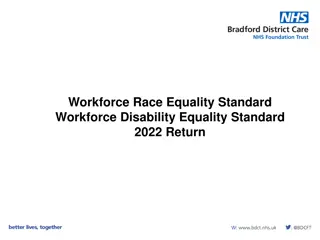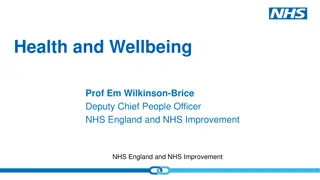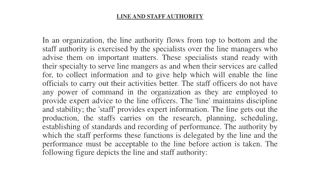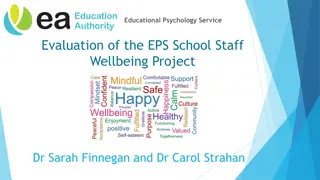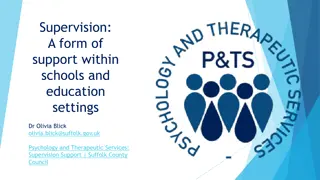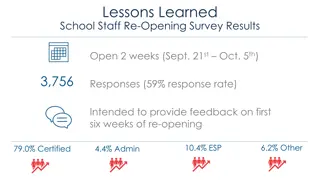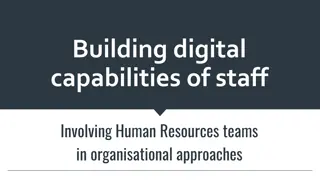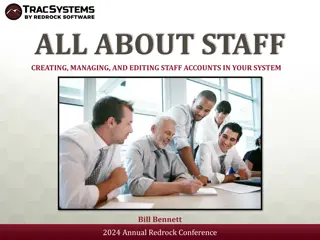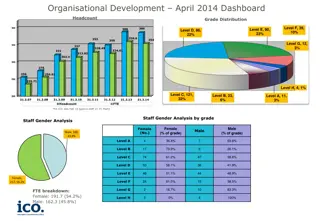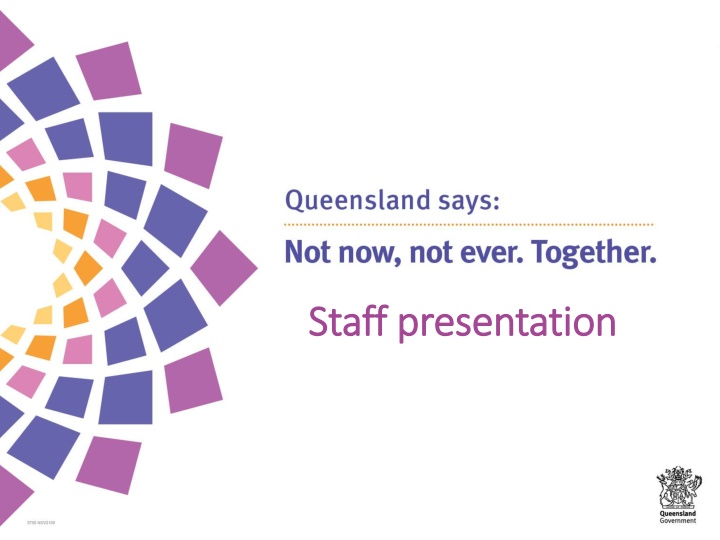
Domestic and Family Violence in the Workplace
Learn about the impact of domestic and family violence in the workplace, including statistics, costs, and resources available. Discover how workplaces can play a crucial role in raising awareness and creating a supportive environment to address this important issue.
Download Presentation

Please find below an Image/Link to download the presentation.
The content on the website is provided AS IS for your information and personal use only. It may not be sold, licensed, or shared on other websites without obtaining consent from the author. If you encounter any issues during the download, it is possible that the publisher has removed the file from their server.
You are allowed to download the files provided on this website for personal or commercial use, subject to the condition that they are used lawfully. All files are the property of their respective owners.
The content on the website is provided AS IS for your information and personal use only. It may not be sold, licensed, or shared on other websites without obtaining consent from the author.
E N D
Presentation Transcript
Staff presentation Staff presentation
Before we start Before we start This is a general presentation. It s designed to provide an overview of: what domestic and family violence is, why it s relevant to us, and some basic tips to help you to recognise it and respond. Given what we know about domestic and family violence statistics, it s highly likely someone here is impacted in some way. Our EAP service is available to provide support.
What is Domestic and Family Violence What is Domestic and Family Violence Domestic violence is about power and control. It s not limited to physical violence, and includes: Emotional abuse Isolation Financial abuse and control Physical abuse Psychological abuse Sexual abuse It does not discriminate and impacts on all sectors of society and every community. Power and Control Wheel co-created by Ellen Pence and Michael Paymar (Domestic Abuse Intervention Project in Duluth, MN)
Impacts of DFV in the Workplace Impacts of DFV in the Workplace One in six women (16% or 1.5 million) and one in seventeen men (5.9% or 528,800) experienced physical violence by a partner (Australian Bureau of Statistics) 1 in 2 working people in the last five years have been exposed to workplace harassment, as a victim or bystander (AHRC) Women experiencing violence need time to attend court, meet with police, lawyers, health professionals, counsellors, child care centres and schools, real estate agents, removalists, banks etc estimated a total 141 hours (ACTU) 95% of victims who were stalked by a violent partner experienced that harassment at work. (Not Now Not Ever Report) Between one quarter and one half of women subjected to domestic violence reported having lost a job at least in part due to that violence. (Not Now Not Ever Report) Violence against women is estimated to cost the Australian economy $22 billion a year (KPMG) This includes direct costs of $465 million each year through absenteeism, lost productivity, and staff turnover. (Commonwealth) The Retail Industry s research estimates that for each case of family violence experienced by an employee within their industry, the direct costs to employers and business owners was approximately $1,404 (NRA) Violence against women in the workplace impacts on the organisational climate and employees sense of wellbeing (VicHealth)
Domestic and family violence is a workplace issue Domestic and family violence is a workplace issue Workplaces have an important role to play in raising awareness about domestic and family violence, and creating a workplace culture and environment that promotes non-violent, equitable and respectful gender relations. The workplace can be the source of economic independence and financial security, supporting people experiencing violence to consider their choices. For some people experiencing violence the workplace is their only safe haven to seek support. Workplaces also have a legislative obligation to ensure a safe workplace. The Fair Work Act requires that employees dealing with the impact of family and domestic violence can: - take unpaid family and domestic violence leave - request flexible working arrangements - take paid or unpaid personal/carer s leave, in certain circumstances. Some employers (such as the Queensland Government, Queensland Rail, Woolworths, Rio Tinto) go further and provide PAID leave
Why have a DFV policy? Why have a DFV policy? A workplace domestic and family violence policy is an important component of an overall workplace strategy for responding to domestic and family violence and ensuring a safe environment and respectful workplace culture. The purpose of a workplace domestic and family violence policy is to: Raise awareness among employees about family violence and the impacts it has on people in the workplace, and how to support co- workers Create a safe working environment that promotes gender equity and models non-violent and respectful relationships Guide responses to employees who are affected by domestic and family violence Create a supportive environment that will encourage people experiencing domestic and family violence to seek support
How to recognise Domestic and Family Violence How to recognise Domestic and Family Violence Someone experiencing domestic and family violence may: seem afraid of their partner or someone close to them try to hide bruises (e.g. by wearing long sleeves in summer, or giving unlikely explanations for injuries) have little or no say about how money is spent stop seeing friends and family and become isolated become depressed, unusually quiet or lose confidence show signs of neglect if they are older or have a disability have a partner who frequently accuses them of cheating or continually checks up on them be reluctant to leave their children with their partner suspect they are being stalked or followed. be contacted many times per day at work by a partner show an unusual reduction in productivity
How can you How can you assist someone seeking assist someone seeking help relating to a domestic and family violence matter? domestic and family violence matter? Respect a person s right to make their own decisions Listen and be empathetic Be open and show that you believe what they are telling you Let them know the domestic and family violence is not their fault Let them know there are support services available help relating to a
What to say to a person you think is What to say to a person you think is experiencing DFV experiencing DFV Do: Make open ended comments: That must be tough Thanks for trusting me with this, what can I do to help? It sounds like you are worried You can start the conversation with: You don t seem yourself are you OK? I ve noticed you ve been coming in late recently, what s happening for you? Don t: If they don t want to talk, you could say: I understand, but if you do want to talk, I m here. Maybe we could check in again next week? provide legal advice guarantee any particular outcomes With thanks to Australia s CEO Challenge Recognise, Respond, Refer training.
Safety planning in the workplace Safety planning in the workplace Maintaining a Risk Assessment and Workplace Safety Plan assists managers assess the risks and the level of support needed to assist an employee affected by domestic and family violence. Risk Assessment and Workplace Safety Plans are one element of a broader suite of government resources that are available for managers to use to support employees affected by DFV. Safety planning considers an individuals circumstances and should be created on a case-by-case basis. The plan can include a range of measures such as new phone numbers, flexible hours, relocation, changed parking arrangements, additional record keeping. The plan considers an individual s circumstances and should be used on a case-by-case basis to: Reflect their specific circumstances and needs Take into account their role and the workplace environment List the precautions to be undertaken to support their safety Identify the changes to their working arrangements to protect them and colleagues Include any other information require to ensure their safety in the workplace Special consideration needs to be given if both the person experiencing violence and the person using violence both work at the same workplace: can shifts be changed, can one person move location, can one person work remotely?
What about employees who might be What about employees who might be using violence (perpetrators)? using violence (perpetrators)? Employers should send the message that domestic and family violence is not acceptable, and policies should be clear about consequences for using work resources (phone, email, car etc.) to perpetrate domestic violence. Support and referral should be provided to employees who seek help in relation to using violence through EAP services and/or referral to Mensline. Consider what access people using violence should have to leave provisions (For example the Queensland Public Service Directive provides that paid leave can only be accessed to attend an approved behavioural change program and after all other leave has been exhausted).
Help lines and contact details Emergency response triple zero (000) DVConnect Womensline 1800 811 811 (Queensland) DVConnect Mensline 1800 600 636 (Queensland) Elder Abuse Helpline 1300 651 192 Sexual Assault Helpline 1800 010 120 Women s Legal Service Qld 1800 957 957 1800 RESPECT 1800 737 732 Policelink 131 444
Further resources The Queensland Government is committed to helping prevent domestic and family violence. Further information about domestic and family violence and support for people experiencing abuse can be found on www.qld.gov.au/domesticviolence More information about workplaces and organisations taking action to create a Queensland free from violence is available at: https://www.csyw.qld.gov.au/campaign/not-now- not-ever-together
Any questions? Any questions?




